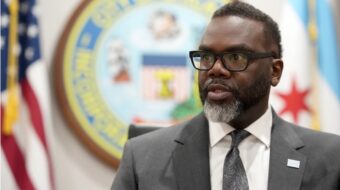NEW YORK-Though illiteracy here and across the U.S. continues to be a growing social problem, efforts to combat it are under attack by the city and state legislature, under the guise of reigning in runaway spending.
The state budget proposals now being debated slash $2 million from the city’s adult literacy program-one third of its total budget. Already $612,000 had been cut from the budget, meaning that, altogether, a full quarter of all money allocated to improving the city’s adult literacy rate has been or is proposed to be slashed.
Additionally, the budget proposes a cut of $1.5 million to GED testing sites.
The lack of basic literacy skills leads has a direct correclation to unemployment and poverty. According to the National Institute for Literacy, 43 percent of those with the lowest literacy skills live in poverty. This, in turn, often leads to a life of desperation and crime: 85 percent of juvenile offenders are functionally or marginally illiterate and 70 percent of all prisoners in state and federal jails are illiterate.
As of 2007, says the NIL, “42 million American adults can’t read at all; 50 million are unable to read at a higher level that is expected of a fourth or fifth grader.” In addition, that number was on the increase by 2.25 million people per year.
Government, advocates say, needs to step in. Cutting programs to combat illiteracy can only lead to more unemployment, poverty and crime, and will cause the children of illiterate adults to do worse in school.
According to City Council member Sara Gonzalez, who spoke at an April 6 rally on the steps of City Hall against the cuts, “Being able to speak English well and having a high school diploma are critical stepping stones towards self-sufficiency. In addition, parents are better able to assist their children with schoolwork” if they are able to read and write.
According to the National Center for Education Statistics, part of the U.S. Department of Higher Education, 22 percent of New Yorkers lack basic literacy skills. That number is higher in poorer communities. The number is 37 percent in Brooklyn and 41 percent in the Bronx.
As the budget fight continues, students, volunteer tutors and program administrators have vowed to continue to struggle.










